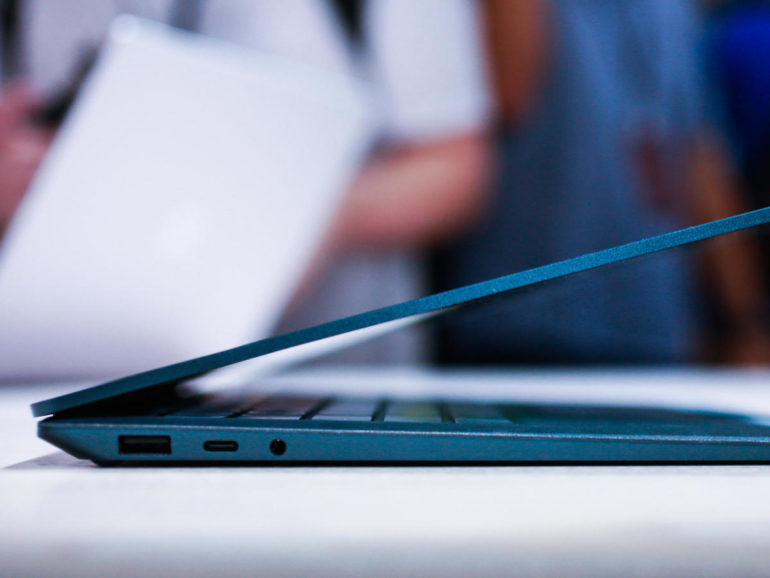Not emotionally engaging?
Sarah Tew/CNET
Everyone needs more technology now.
COVID-19 made sure of that.
However, in the last 12 months, it hasn’t always been easy for tech brands to get customers on their side or then to match their expectations. Especially when the customers were — sometimes unhappily — working from home.
Some brands, it seems, may have done better than others.
I’ve just been staring at the detailed analysis of the annual Customer Loyalty Engagement Index produced by consultancy Brand Keys. This is the 25th edition, so you’d hope they’d know what they’re doing by now.
Brand Keys was fascinated by how Covid times affected loyalty toward all sorts of tech brands and products.
It’s one thing to have feelings for a certain brand. It’s quite another for your expectations of that brand to be met.
One result that might just cause a murmuring ripple is the perceived difference between Apple and Microsoft. Specifically, their laptops. While Macs have been around for so many years, Microsoft’s Surfaces have begun to impact people’s hearts and minds.
At least that’s what I thought.
This survey of 75,804 Americans suggested they have very clear feelings about Macs and Surfaces.
Macs were placed in the stress-test loyalty quadrant that read: High emotional engagement, high levels of meeting expectations.
Surfaces, on the other hand, were in the so-called lower right quadrant: Low emotional engagement, high levels of meeting expectations.
I’d rather thought Microsoft had made great efforts to make the Surface more emotionally uplifting. Especially by aligning it with the NFL and other professional sports.
Yet these representative Americans put Microsoft’s laptops in the same box with Canon, HP, and Brother copiers, Kobo’s e-reader, and the headphones of Audio-Technica.
Which tech brands and products, then, were lifted into the high emotional engagement, high level of meeting expectations category?
Well, Apple’s Macs were there with the iPhone, the iPad, and AirPods. These were joined by Konica-Minolta’s copiers, Samsung TVs, phones, copiers, and tablets, and the TVs of Sony, and LG. Oh, and Amazon’s tablets and Kindle. (What?)
For some, this will merely be frivolous marketing flotsam. Even if this is how people say they feel, are they truly honest? And do they behave according to their stated feelings?
Well, take a look at the high emotional engagement, low level of meeting expectations box. There, you’ll find everything Asus. You’ll also encounter LG’s phones, Canon’s copiers, and Acer and HP laptops. Oh, and the headphones of Apple’s Beats.
Do any of those sound as if they should be there? Beats headphones, anyone?
I can tell, though, you’re wondering about the entirely hopeless category.
Those tech brands and products that people really have no positive emotions toward and which don’t inspire customers’ hope that they’ll meet expectations. Here we find Sharp and Hitachi TVs. Joining them are everything Epson, Panasonic headphones, and LG’s tablets.
We all create certain perceptions in our minds about which products are inspiring and which we’d never even want to touch. Do we always know what’s behind those perceptions?
Research shows that creating a community around a brand — wittingly or otherwise — creates greater loyalty than, say, rewards.
Writing in the Harvard Business Review, strategy executive Ana Andjelic explained that people really like being part of a club. Much as Apple fanpersons were derided for their fervor, their sense of community enhanced loyalty toward Apple. The creation of Apple stores even gave them a church to attend.
Somehow, Microsoft didn’t grasp such things for a long time, created its stores many years behind Apple, and has now closed almost all.
For so many people, COVID-19 times intensified the need for tech brands to delight and to deliver.
Here’s how Robert Passikoff, founder and president of Brand Keys, put it: “You want consumers to feel your brand engenders high emotional engagement and meets their expectations as completely as possible. Brands able to do that are six times more likely to create loyal customers, and loyal customers are six times more likely to give a brand the benefit of the doubt in tough circumstances.”
Sometimes, investing in your image — and the feelings it projects — is worth it.



